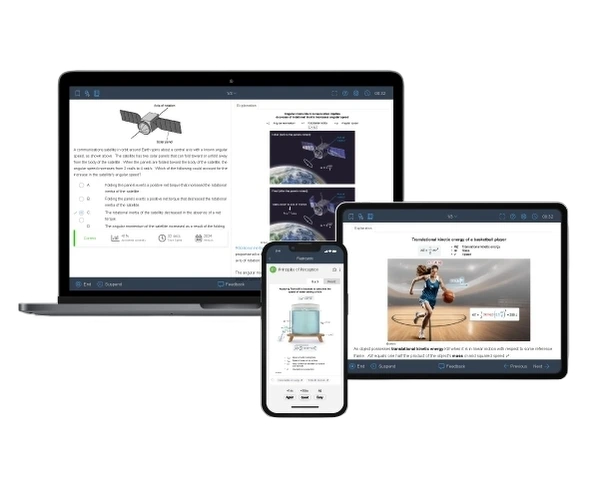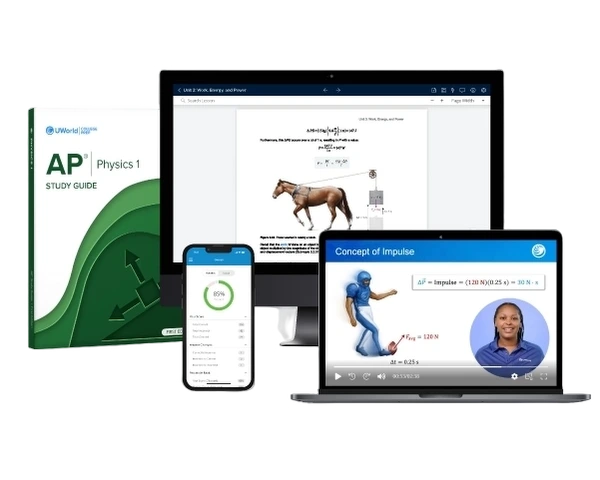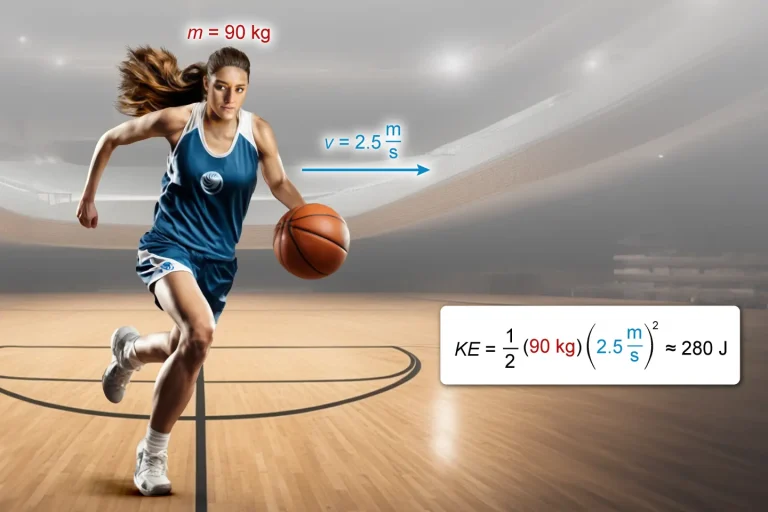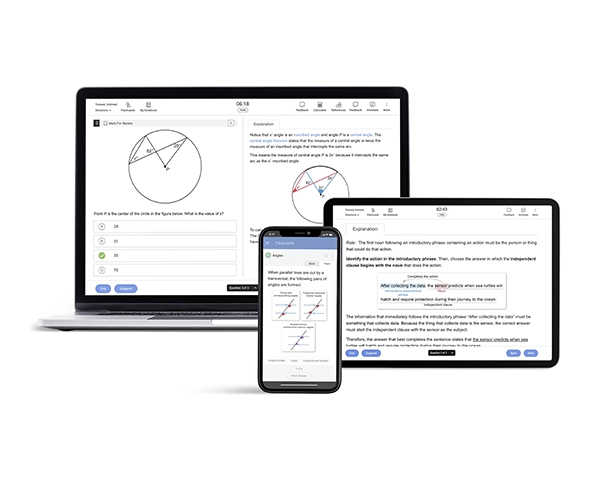AP Physics 1 labs are essential because they allow you to apply theoretical concepts through hands-on experiments. These labs foster critical thinking, problem-solving, and data analysis skills, which are vital for mastering the concepts of physics. They also provide valuable preparation for the AP exam by giving you hands-on experience with experimental techniques, measurements, and the scientific method, all of which are integral to the test.
Engaging in these labs helps you see the real-world applications of physics principles, deepening your overall understanding. To make the most of these lab experiences and further strengthen your preparation, having a solid AP Physics 1 study guide can help reinforce key concepts and provide additional practice in applying them.
AP Physics 1 Lab Materials
The equipment and materials required for AP Physics 1 lab investigations are similar to those used in typical high school-level physics courses. However, access to specialized equipment, such as force sensors and air tracks, may be useful in certain investigations.
What Labs Are in AP Physics 1?
College Board® publishes a lab manual with 7 inquiry-based labs to help your teacher design experiments, collect and analyze data, and refine scientific explanations in AP Physics 1. The experience of “doing science” that you receive by conducting these kinds of labs will prepare you for the AP Physics 1 exam, which assesses your science practice skills and content knowledge. In addition to the hands-on lab work, reviewing key concepts through practice tests and questions can further solidify your understanding and help you feel confident as you approach the lab.
These inquiry-based labs are designed for hands-on exploration and match the AP Physics 1 curriculum. They’re optional, so your teacher might use different labs if they cover the same material.
The labs in the AP Physics 1 curriculum are geared toward helping you understand important physics concepts and the scientific evidence that supports them. The AP Physics 1 course focuses on developing your conceptual understanding of physics, scientific reasoning, and quantitative skills.
Here’s a quick summary of the labs in the AP Physics 1 lab manual:
Lab 1: 1D and 2D Kinematics
You will design and conduct experiments involving constant or accelerated motion in 1 or 2 dimensions. After collecting data from these experiments, you will produce graphs of position and velocity as functions of time to analyze the motion of objects accelerating horizontally. Finally, you will learn to relate the initial velocity of a horizontally launched projectile to the distance it travels before hitting the ground. This lab allows you to gain experience making measurements, graphing data, and applying mathematical routines.
Lab 2: Newton’s Second Law
You will design and conduct an experiment to determine how an object’s acceleration is related to the object's mass and the force applied to the object. Upon completing the experiment, you can create graphs of acceleration vs. force and acceleration vs. mass and use the data to derive the mathematical form of Newton’s second law. This lab allows you to create and use graphical representations of data, explain sources of error in the data, and apply mathematical routines to the data.
Lab 3: Circular Motion
You will design an experiment that allows you to predict a conical pendulum’s period of motion. After completing the lab, you can draw a free-body diagram representing an object moving as a conical pendulum and use Newton’s second law to analyze this motion. You can also use length measurements alone to predict a conical pendulum’s period. You will gain experience making measurements, analyzing data uncertainties, and applying mathematical routines.
Lab 4: Conservation of Energy
You will design experiments to investigate the concept of energy conservation by investigating changes in potential and kinetic energies. Upon completing the lab, you can make accurate statements concerning energy transfer from a spring to a cart. You will gain experience graphing data, using mathematical routines, identifying mathematical relationships between variables, and making scientific claims.

Lab 5: Impulse and Momentum
You will design experiments to investigate the forces and impulses associated with the interactions between carts during collisions. You will also investigate the concept of conservation of linear momentum and be able to explain how a force is related to the change in momentum and impulse. You will gain experience making measurements, graphing data, identifying relationships between variables, and making predictions based on scientific models.
Lab 6: Harmonic Motion
You will gain experience working with the motion of a pendulum and the factors that affect a pendulum’s period. After completing this lab, you can create motion graphs representing a pendulum’s periodic motion and predict how properties such as force, acceleration, and velocity determine this motion. This lab gives you experience creating graphs, designing experiments, identifying relationships among variables, and predicting natural phenomena based on your understanding of AP Physics 1 exam theories.
Lab 7: Rotational Motion
You will investigate how an object’s physical characteristics, such as mass, radius, and shape, affect its translational and rotational speeds as it rolls to the bottom of an inclined ramp. Upon completing this investigation, you can express an object’s motion using multiple representations and calculate the object’s total energy, angular momentum, and rotational inertia. You will gain experience collecting and analyzing experimental data, designing experiments, and diagramming experimental setups.
Now that we’ve talked about all labs in the AP Physics 1 lab manual, it’s time to start practicing. The more experience you have doing labs aligned with the AP Physics 1 curriculum framework, the better prepared you will be for the exam.
Check out our comprehensive, all-in-one AP Physics 1 online course to set you up for success. We’ve got you covered with all the resources you need for labs and exam day.

References
- AP Physics 1: Algebra-Based Course and Exam Description. (Fall 2024). apcentral.collegeboard.org. Retrieved from https://apcentral.collegeboard.org/media/pdf/ap-physics-1-course-and-exam-description-effective-fall-2024.pdf
- AP® Physics 1 and 2 Inquiry-Based Lab Investigations: Teacher’s Manual. (Fall 2021). secure-media.collegeboard.org. Retrieved from https://secure-media.collegeboard.org/digitalServices/pdf/ap/ap-physics-inquiry-based-lab-manual.pdf
Related Topics
Want to know how to write an outstanding AP Physics 1 lab report? Check out our expert guide on writing an effective lab report with all the tips you need.
About AP Physics 1 ExamWhat's on the AP Physics 1 exam? Why take AP Physics 1? How difficult is AP Physics 1? Who should take the exam? Get all the answers to these questions!
AP Physics 1 Course and Exam DescriptionSpend less time studying by reading UWorld's summarized AP Physics Course and Exam Description – for in-depth understanding of the topics covered in your course.
Best AP Physics 1 Review Course ComparisonSearching for top AP Physics 1 online prep courses? Read this in-depth review to compare the best courses and choose the perfect one for your AP exam success.
Best AP Physics 1 Study Guide ComparisonKaplan vs. Barron's vs. Princeton Review vs. UWorld—compare strategies, features, and effectiveness to find the ultimate guide for AP Physics 1 success.
How to Self-Study for AP Physics 1Want to ace AP Physics 1 on your own? Follow this expert’s self-study guide, packed with tips, tricks, and essential tools to prepare effectively for the exam.



